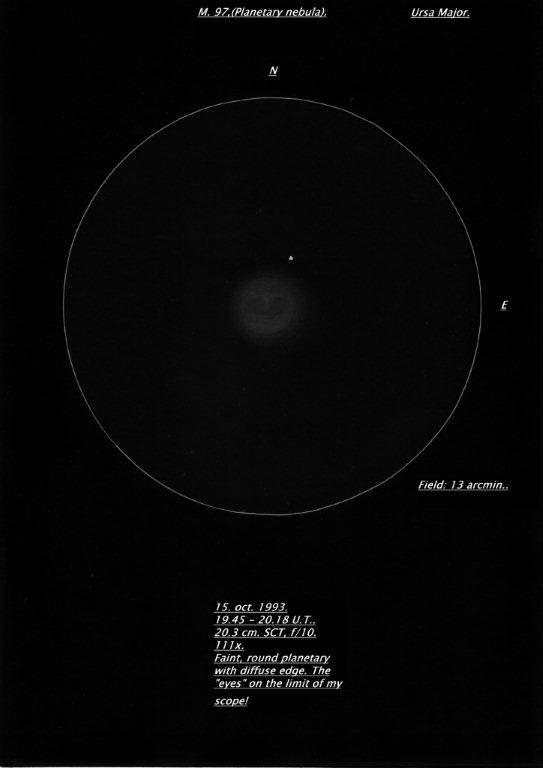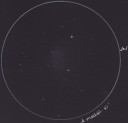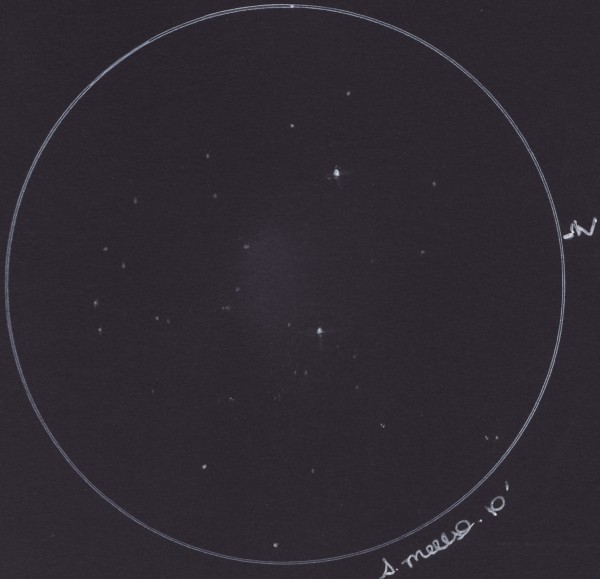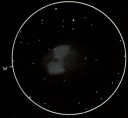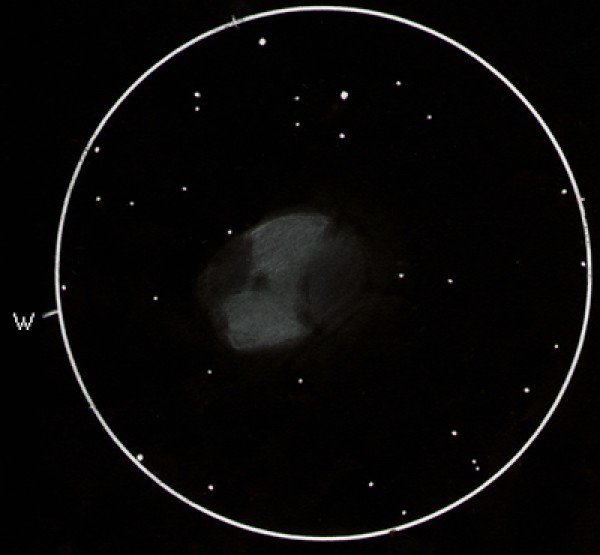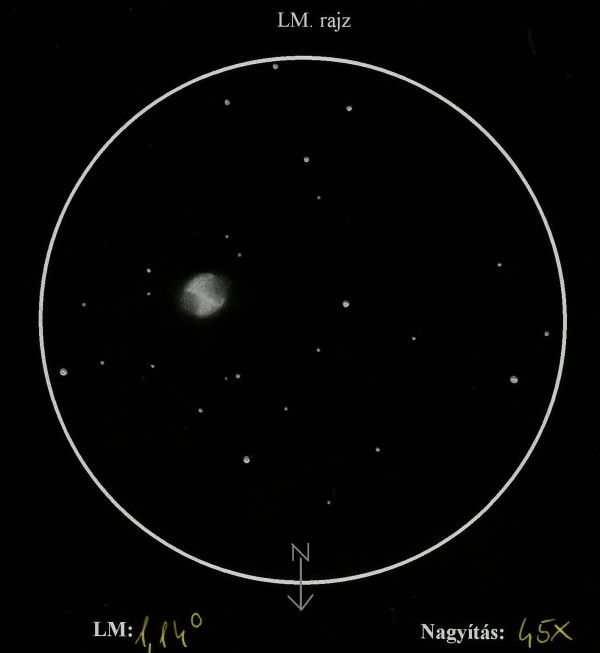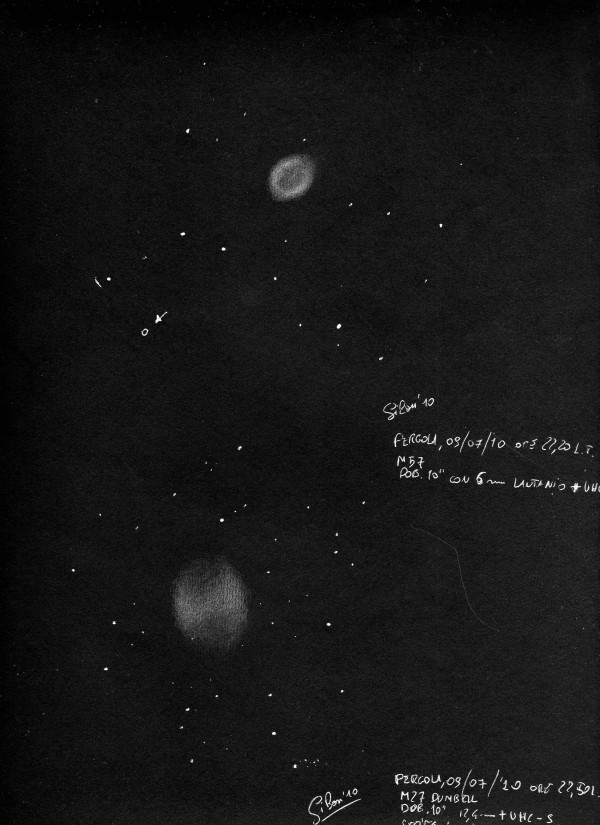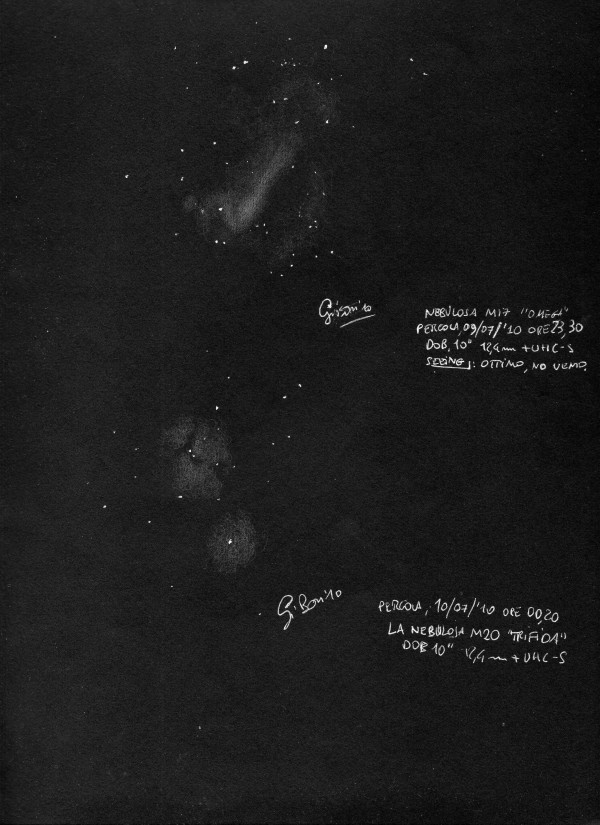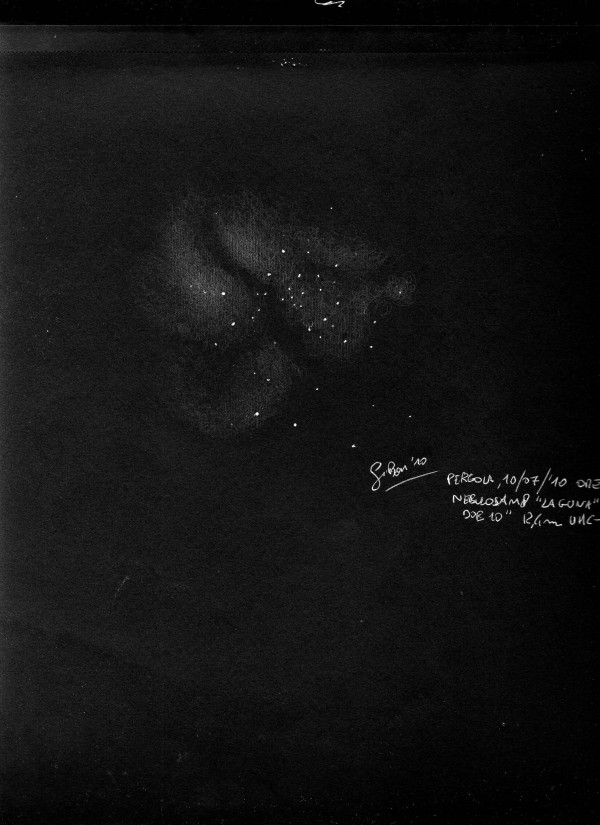
Object Name: NGC 6818
Also Known As: H.IV.51, PK 025-17.1, VV 241, Little Gem Nebula
Object Type: Planetary Nebula
Constellation: Sagittarius
Right Ascension (2000.0): 19h 43m 57.7s
Declination (2000.0): –14° 09′ 11″
Magnitude: 9.3
Dimensions: 22″ x 15″
Voronstov-Velyaminov Classification: 4
Distance: 5,500 light years
Discovery: William Herschel on 8 August 1787 with 18.7-inch reflector
NGC Description: ¡, B, vS, R
Telescope: Parks Astrolight EQ6 • 6″ f/6 Newtonian Reflector
Eyepiece/Magnification: 7.5mm Parks Gold Series Plössl + 2x Barlow • 240x • 13′ Field of View
Filter: None
Date/Time: 4 September 2010 • 05:15-06:00 UT
Observing Location: Oakzanita Springs, Descanso, San Diego Co., California, USA
Transparency: NELM 6.3; TLM 15.2
Seeing: Pickering 8
Conditions: Clear, calm
Media: #2 pencil, cartridge paper, blending stump; scanned and processed in Microsoft Picture It!
Tucked away in the neglected northeastern corner of Sagittarius is a small but bright annular planetary nebula known as NGC 6818. To find this little gem, center your finder on a trio of 5th magnitude stars: 54 Sgr, 55 Sgr, and HD 186185. The later star is the farthest north and farthest east and should next be centered in your low to medium-power eyepiece. From this star sweep 1.3° north. About halfway there (if you are at a dark sky site), you may see the elusive glow of Barnard’s Galaxy, NGC 6822 sliding along the eastern half of your field of view. Passing this fascinating galaxy by, you soon arrive at the appointed field of view.
At low magnifications (30x), NGC 6818 appears stellar, indistinguishable from several other similarly bright stars in the wide field of view. At medium magnifications (60x), NGC 6818 is discernibly non-stellar, showing a featureless blue-green disk . High magnification (120x) reveals a dark center surrounded by a small, but brilliant ring of uniformly lit blue-green fire. Bumping the magnification up to 240x and 300x reveals several bright clumps and dark patches in the ring. The two most prominent are NE and SE of the nebula’s center. I was not successful in spotting the 13th-magnitude central star, though the transparency and seeing conditions were excellent. I was also surprised at how dark the center was, most observers report only a slight darkening in the central region.
Eric Graff
